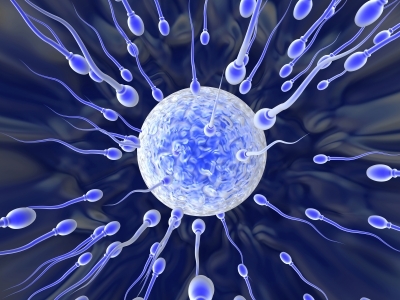Why Women Choose Abortion

Understanding why a woman gets an abortion may help to prevent unintended pregnancies in the first place, say scientists who have dug into this complex, and often controversial, matter.
Their new research suggests a not-insignificant percentage of abortion-seeking women are in the midst of a disruptive life event, such as job loss, relationship breakdown or lack of funds for rent/mortgage payments around the time they made their abortion decision.
The study results, detailed in the Journal of Family Planning and Reproductive Health Care, cannot suggest a cause-effect link between life stressors and abortion. However, the researchers say the results have practical implications regarding access to birth control.
Abortion decision
The study, by researchers from the Guttmacher Institute in New York, relied on data from nearly 9,500 American women who had an abortion in 2008; the women indicated whether they had experienced any of 11 disruptive life events at the time, as well as socioeconomic factors and contraceptive use. The researchers also conducted in-depth interviews with 49 women, ages 18 and older, from June to October 2008.
—Abortion laws by state: https://reproductiverights.org/maps/abortion-laws-by-state/
—For questions about legal rights and self-managed abortion: www.reprolegalhelpline.org
—To find an abortion clinic in the US: www.ineedanA.com
—Miscarriage & Abortion Hotline operated by doctors who can offer expert medical advice: Available online or at 833-246-2632
—To find practical support accessing abortion: www.apiarycollective.org
Of the women who reported having an abortion, more than 57 percent noted they'd faced at least one major life stressor in the preceding year. For instance, nearly 20 percent had lost their job; 16 percent had separated from a partner; 14 percent had fallen behind on rent or mortgage; and nearly 12 percent had moved several times.
In addition, 10 percent had experienced the death of a close friend; 10 percent had had a baby; and 7 percent had experienced domestic violence. [10 Most Destructive Human Behaviors]
Get the world’s most fascinating discoveries delivered straight to your inbox.
Poor women were more likely than affluent women to have experienced multiple life stressors, "perhaps because a lack of financial resources prevents them from dealing with the fallout from one disruption and, in turn, a 'chain effect' is initiated," the researchers write.
(The researchers noted that in 2008 in the United States, women in poverty made up 42 percent of the 1.2 million abortions that year.)
Multiple life stressors
Regardless of poverty, the researchers found the fallout from one disruptive event could set a woman up for other life stressors, some of which led to an unintended pregnancy.
For instance, during the in-depth interviews, a married woman considered poor described the difficulty she had leaving an abusive partner after her mother died: "I mean, I was actually seeing a counselor for depression. I was put on antidepressants and anxiety medications, and it just – I should have left before, and I just didn't. I mean, through therapy, through everything, I know I should have left sooner and, you know, my mom got sick all of a sudden [and subsequently died], and all this happened, so I just didn't get out when I should have."
Another married, poor woman noted: "I have two babies, so I have an 18-month and a 6-month old ... so I can't have another one right now. ... I just know I am not strong enough for it; some women are stronger than others. I am just not strong enough to take care of three kids. ... they both cry at the same time, and I am sick [from this pregnancy]. Oh no; I can't do it, I am sorry."
Though not too common in the survey, the researchers found contraceptive sabotage explained some unintended pregnancies. Six of those interviewed said their partner had tried to get them pregnant against their will, usually by refusing to withdraw during intercourse.
The researchers say the study results have political implications, for instance, suggesting easier access to birth control could help to prevent some unintended pregnancies. They point to free birth control, the availability of getting multiple refills at once and over-the-counter availability as potential solutions.
"Increased access to long-acting contraceptive methods such as the intrauterine device could also reduce the ability of disruptive events to interfere with contraceptive use as these methods do not require refills or maintenance costs," they write.
Follow LiveScience on Twitter @livescience. We're also on Facebook & Google+.
This article was updated on August 4, 2022 by Live Science contributor Alice Ball following the Supreme Court's decision to overturn Roe v. Wade on June 24, 2022. This decision eliminated the constitutional right to abortion that was established by the 1973 court case and later affirmed by a 1992 case called Planned Parenthood of Southeastern Pennsylvania v. Casey.
Jeanna Bryner is managing editor of Scientific American. Previously she was editor in chief of Live Science and, prior to that, an editor at Scholastic's Science World magazine. Bryner has an English degree from Salisbury University, a master's degree in biogeochemistry and environmental sciences from the University of Maryland and a graduate science journalism degree from New York University. She has worked as a biologist in Florida, where she monitored wetlands and did field surveys for endangered species, including the gorgeous Florida Scrub Jay. She also received an ocean sciences journalism fellowship from the Woods Hole Oceanographic Institution. She is a firm believer that science is for everyone and that just about everything can be viewed through the lens of science.


